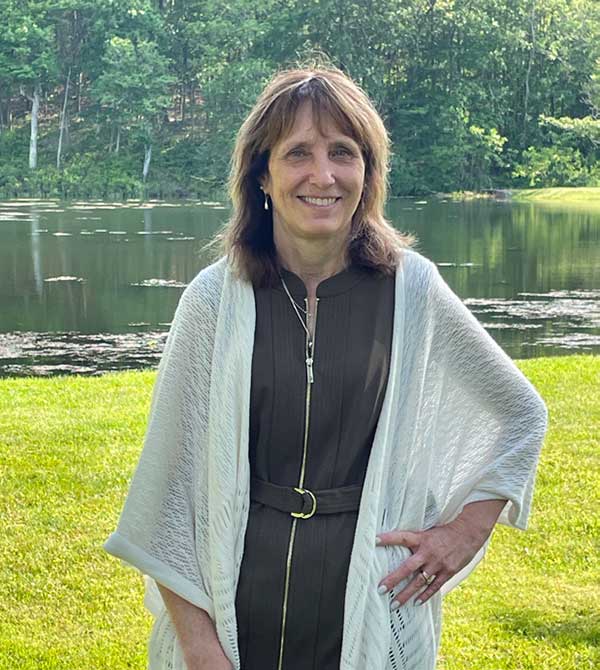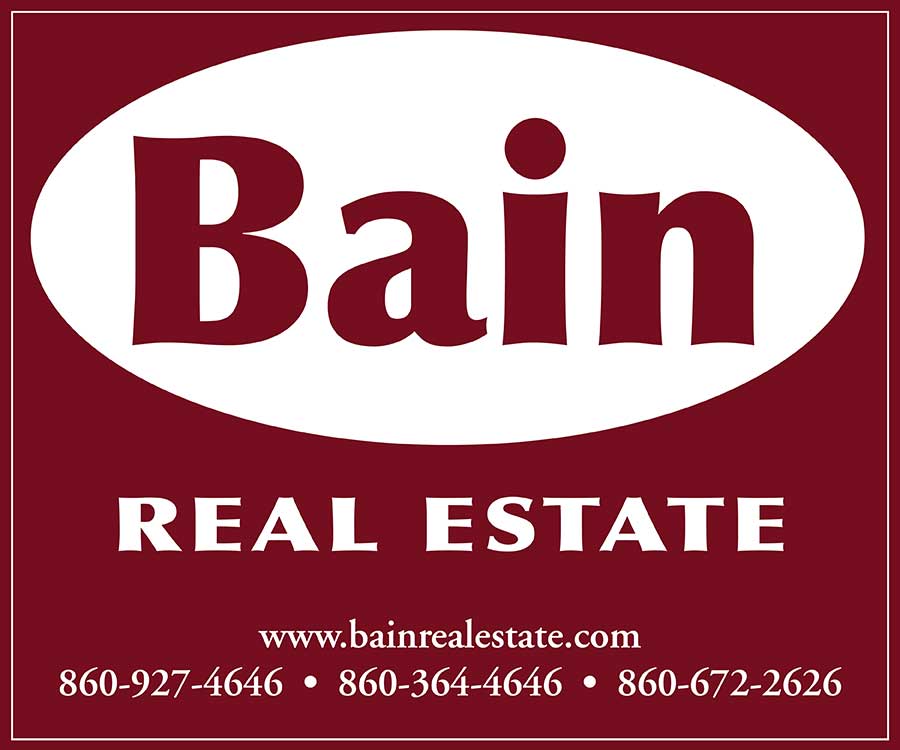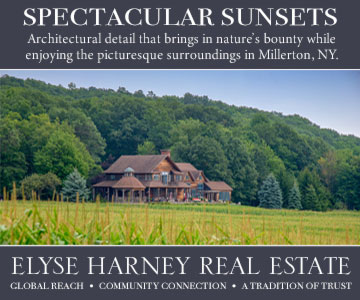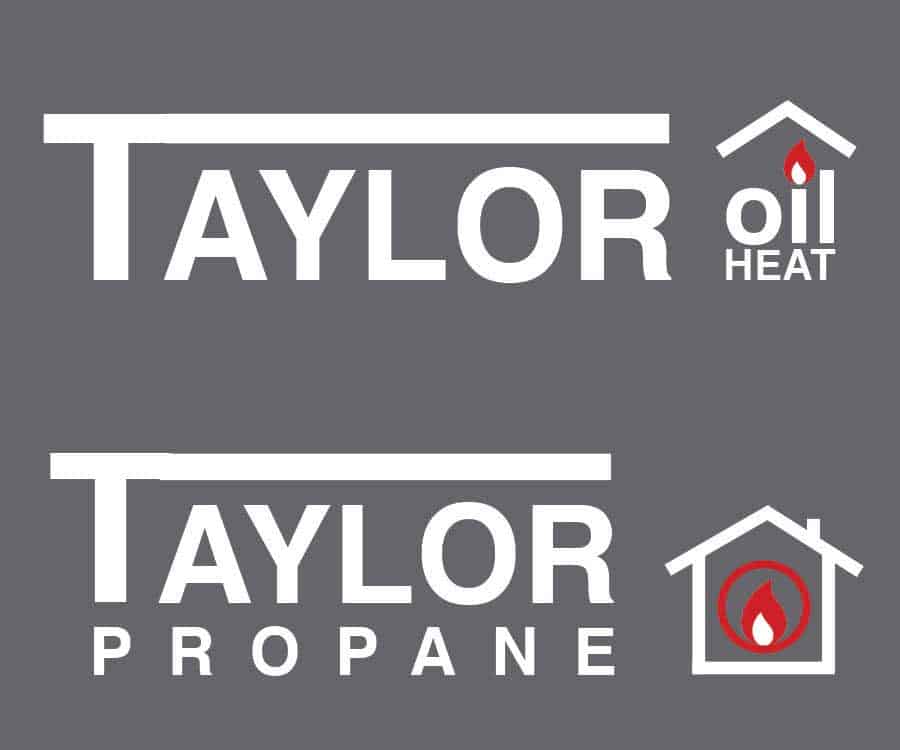Real Estate

The Gift of Land
“We are so lucky to live here in Dutchess County – with its incredible tapestry of open meadows, wooded hillsides, streams meandering through hidden valleys, orchards, and cornfields. It is a tapestry rich in natural resources and stunning scenic vistas. The work the DLC does helps to provide us all with clean water, local farm produce, picturesque landscapes, and places where we can leave the stress of daily life behind. We are rewarded with the knowledge that we are protecting and stewarding this land for generations to come.” This quote from Rebecca Seaman, past chair and board member of the Dutchess Land Conservancy, reminded me at this holiday time of the gift that all land conservancies and trusts bestow on our communities. Main Street interviewed Rebecca “Becky” Thornton, president and CEO of the DLC, who has guided it for the last 30 years, during a break in her busy schedule.
How much land has the DLC protected?
The DLC now protects over 20,500 acres of farmland, 20,730 acres of forests, and 5,000 acres of water – over 46,000 acres in all, largely through conservation easements. The land is primarily in Dutchess County, especially in the more rural northern part. But in addition to protecting land, the DLC also has an active education and research program and community involvement efforts.
Does the DLC own these properties?
We typically don’t own properties but work with landowners to place conservation easements that limit development on their land and ensure that the landowner’s goals for the property will remain intact for the future. The landowner’s reasons for placing an easement are balanced with DLC’s conservation goals and include preserving a scenic view or protecting open fields, ponds, streams, forests, and wildlife habitats. We want to protect the land that hosts the resources necessary for us to live and contributes to rural character of our communities.
After establishing a stewardship plan, the DLC monitors the properties to make certain that they remain in compliance with the easement. Every year we fly over these properties to assure that no buildings have suddenly appeared or forests have been cut down. Right now we are guardians for 436 separate parcels.
 Is a tax deduction the primary motivation for property owners to create conservation easements?
Is a tax deduction the primary motivation for property owners to create conservation easements?
While it is true that there are federal benefits in the form of income tax deductions that may be taken over 16 years, as well as a relatively small state income tax credit, in my experience the overwhelming reason to place an easement on a property is the owner’s love of the land and wish never to see it altered significantly.
How does the DLC help family farms? How does it protect our water resources?
By purchasing development rights to agricultural land, the DLC provides cash (raised through grant sources) that helps protect the future of farms that have been in families for generations. An example is Locust Grove Farm in Salt Point, which has been in the Atkins family since 1832. With help from the DLC, along with Scenic Hudson, the NYS Department of Agriculture and Markets, and Dutchess County, development rights were purchased from the Atkins to protect the farmland, which in turn also secured a major viewshed.
The purchase of development rights on the Jordan Lane Farm in Pine Plains protected farmland as well as 40 acres of wetlands adjacent to the town’s wellhead protection zone, completing a contiguous block of 5,000 acres of protected farmland. This project is an example of DLC providing the planning and protection expertise with funding by New York State DEC’s water quality improvement program and the assistance of Dutchess County.
Farm landowners often use the money paid for their development rights to improve farm infrastructure, purchase much needed equipment, buy neighboring land, or to transition the farm to the next generation. Keeping farmers on the land is important in a county where farming is still one of the primary industries.
Where does the money come from to support the activities of the DLC?
DLC activities are paid for by generous private contributions, our annual fundraisers, and some private foundation grants. Federal, state, and county grants are provided for specific special projects. The DLC tries to be very transparent and our financial statements and annual reports are easily accessible on our website.
Does the DLC hold land for public access?
Several years ago, the organization made the conscious strategic decision to focus on protecting resources through conservation easements rather than developing land for public recreation as many land trusts do. Dutchess County is already blessed with substantial state, county, and public parks, so we decided to focus our efforts on protecting farmland, water, forests, and views. The DLC does have a program to work with towns that want to acquire land for passive public recreation but don’t have the expertise to so. An example of this is the Dover Stone Church Preserve in Dover Plains, which the DLC partnered with the town, the county, and the Friends of Dover Stone Church to acquire and protect. While this continues to be the DLC’s strategy, most recently, the DLC accepted the generous gift of over 1,258-acres of land from Gayle and the late Jesse Bontecou which was simultaneously protected by a conservation easement held by Scenic Hudson. As a one and only property of its kind, we plan to own and manage the land as a wildlife conservation preserve.
What is the DLC’s position on affordable housing?
The DLC understands that there is a need for affordable places for people to live and work in Dutchess County. We support well-planned communities that are sustainable, and we support density in villages and cities, which takes the pressure off the more rural landscape. We just completed a project in partnership with Red Hook and Scenic Hudson to provide land for affordable housing, a future community solar field, public trails, and a buffer for the municipal water source, all while conserving the majority of the farm. A working farm was protected as the scenic gateway between the town and village with affordable housing located at the edge of the village.
Does the DLC accept gifts of land?
The DLC accepts gifts of land in fee, but as noted above, as a practice, we do not hold the land for public access. Instead we make sure that the landowner agrees in advance, and we resell the property with a DLC conservation easement, ensuring that the land is forever protected. Sales of donated properties bring in much-needed revenue to support our conservation and long-term stewardship efforts.
What is the process for placing an easement on a property? How long does it take?
The DLC works with landowners on a plan for their property that protects the most important resources while allowing for limited building to occur in pre-designated locations. After agreeing on the future goals for the property, an easement is drafted that is reviewed by the landowners, their advisors, and the DLC. Once everyone is in agreement, the easement is approved by the DLC’s Board. If there is a mortgage, the lender needs to subordinate its interest. If the landowner is seeking an income tax deduction for the gift, the DLC helps with a list of qualified appraisers. The DLC prepares a baseline documentation report on the current conditions of the property that is then reviewed and signed by the landowner and the DLC. A closing occurs and the easement is filed at the County Clerk’s office and forever runs with the land no matter who owns it. It can take a couple to several months to complete an easement if clear goals and title are established. We always let the owner know that active stewardship by the DLC is part of the ongoing process to protect the land.
How do you monitor the land? Are easements ever found in violation of the agreement?
In order to ensure good landowner relationships, we always contact landowners in advance. Every year we fly over each protected property in a small plane and then every couple of years we make certain to visit the property on the ground in person. There are lots of minor technical violations of easements that are easily resolvable and very few big ones. If someone builds a structure in a field where they are not supposed to, worst case scenario is we go to litigation, but we try to resolve issues without having to go to court.
Where are the bulk of the DLC’s easements?
The DLC first started working in northeastern Dutchess County, because like most grass-roots organizations, we were founded on a threat by a proposed large development on farmland that would impact the rural character of the community. So we have a lot of acreage protected in the Towns of Washington, where our office is, Stanford, North East, Amenia, and Pine Plains, as well as other towns. We also protect some land in Columbia County, particularly in Ancram. When we began our work early in the 80s and 90s, communities in the southern part of the county were very interested in development versus conservation, but that is now changing.
How did you become involved with conservation?
My initial educational background was in landscape architecture; however, I was influenced early on by Ian McHarg, a Scottish landscape architect, author of Design with Nature, whose goal is to promote ecological design that takes into account pre-existing ecology and natural systems. After graduating I worked in a landscape firm for several years, then for a watershed protection organization before starting a company with a colleague that focused on conservation planning and preserving land. With that background I joined the DLC as a land projects manager in 1989, very early in the life of the organization which was founded in 1985. In 1996, when I became the head of the DLC, there were 6,800 acres under conservation and now we’re over 46,000 acres. I am blessed to work in a community that is so supportive and cares about the land, with a wonderful board of directors who walk the walk and talk the talk, and a very dedicated and hardworking staff. I can feel good about what I do every day. It’s very rewarding work when you can look back and see not changes, but how the landscape has remained virtually the same over time. The resources we so need to maintain our lives, are forever protected. •
Christine Bates is a registered real-estate agent in New York and Connecticut with William Pitt Sotheby’s. She has written about real estate and business since Main Street Magazine’s first issue in 2013.





